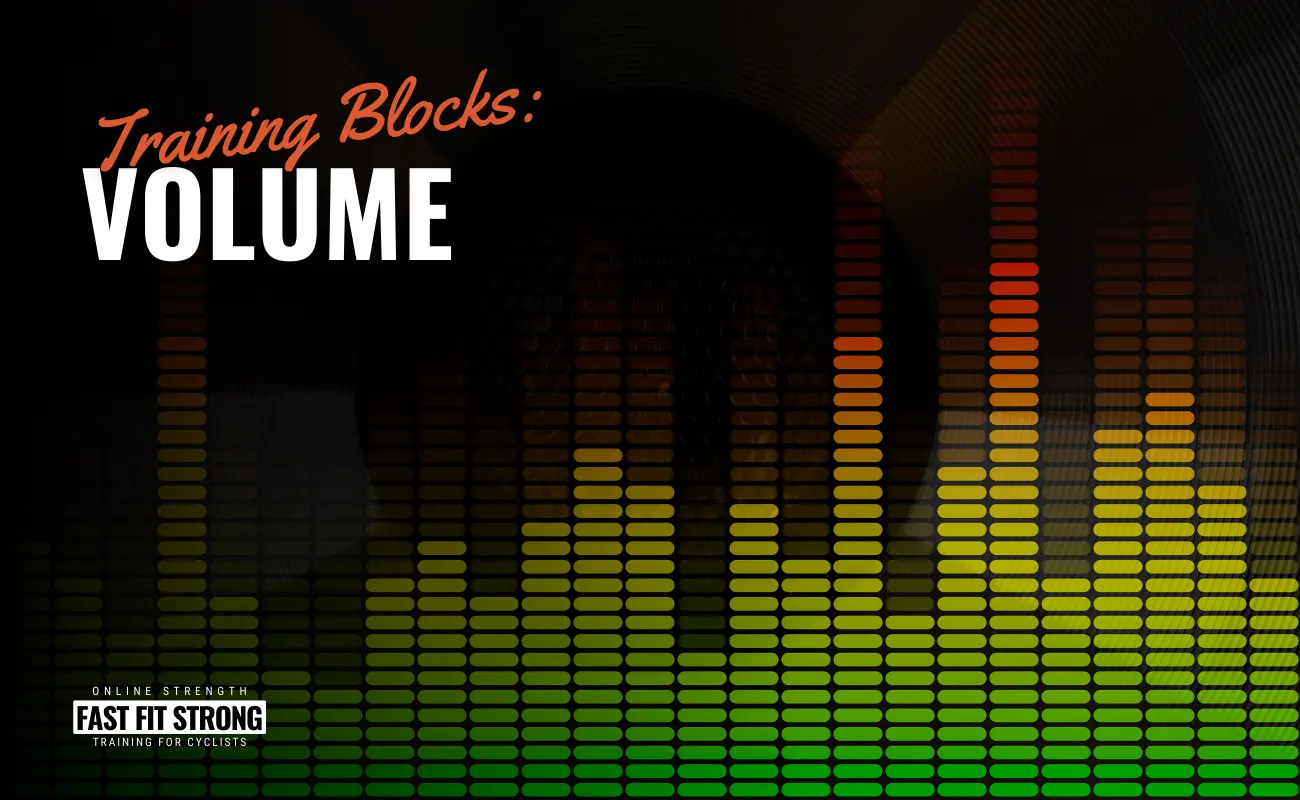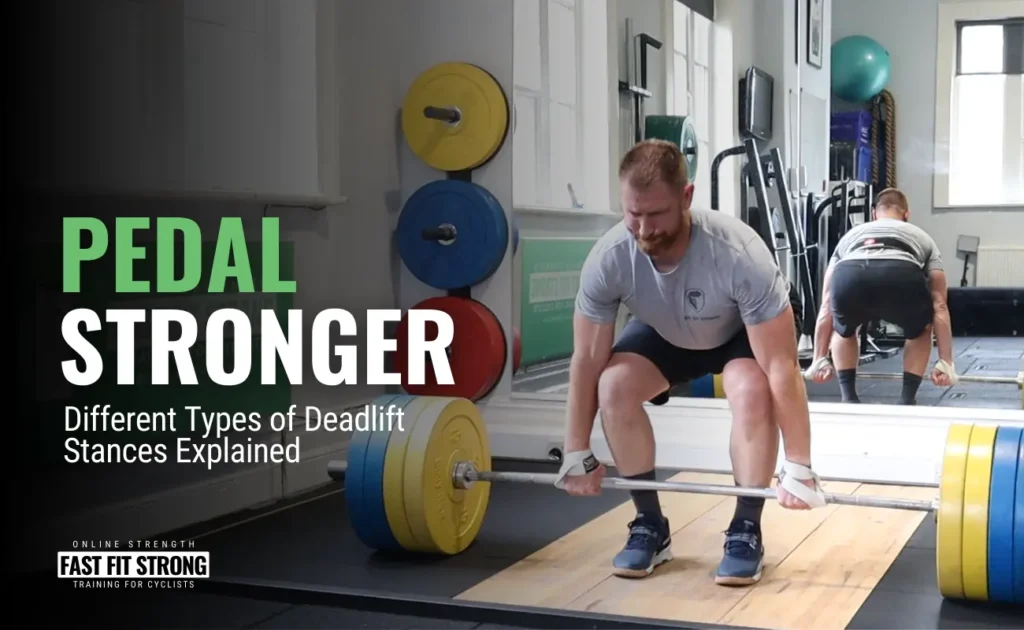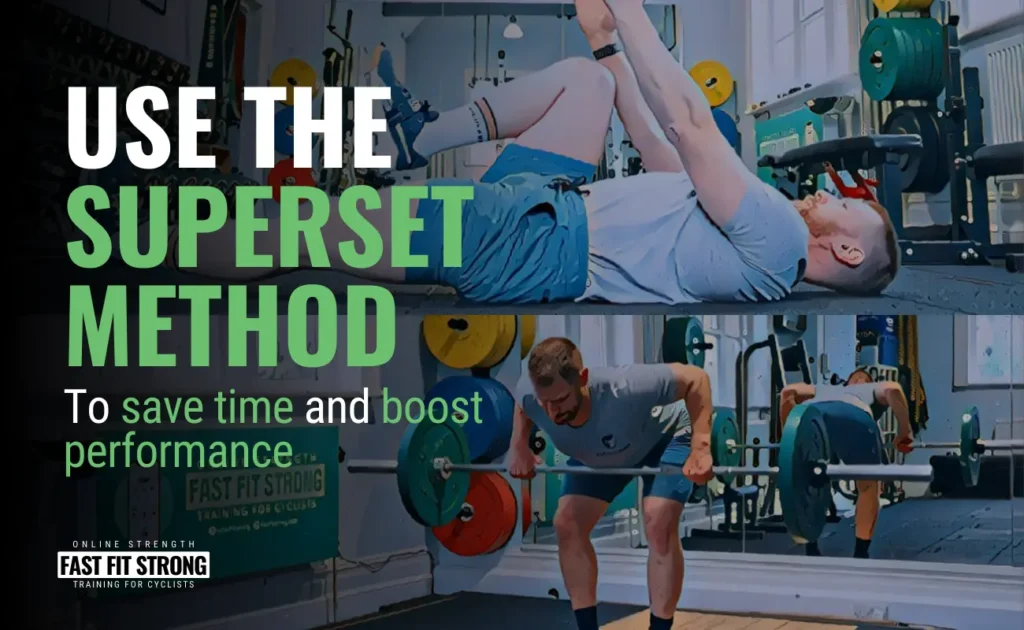Training volume is an important factor to consider when completing a strength training program. Both on the road and in the gym it’s an expression of how much work you’ve done and it’s obvious to state, that if you’re able to do more work you’re a better athlete. After all, that’s what we’re training for, right?
Whether riding, running or swimming it is usually expressed as distance travelled over a week, but when you’re lifting weights it can be a little more complex depending on how you think about it…
Calculating gym volume
The classical method of calculating gym volume is to multiply sets, reps and load. So, if I complete 3 sets of 10 squats with a 10kg weight, my volume would be:
3 x 8 x 10 = 240 kg
This is what I report back to my athletes as they complete their training in the TrainHeroic app and it’s a fantastic measure of improvement, but it’s a quick and dirty method, that comes with a few problems.
Problem #1
If you complete a given exercise with 8 reps and the next time you do it you manage to do 10 reps it’s very easy to see that I’ve done more work, therefore you have increased your training volume.
But, what if I completed the 8 reps with 10kg and the 10 reps with 8kg?
Which is better and which constitutes more work? Going back to the previous calculation:
- Week 1 = 3 x 8 x 10 = 240kg
- Week 2 = 3 x 10 x 8 = 240kg
The volume is the same, but the physiological effort is different. This is perhaps better highlighted by a more extreme example.
The training volume of 10 x 1 at 10kg is equal to 1 x 10 at 10kg, whereas they are nothing like each other in practice.
Problem #2
The second problem of using this method is that it treats all exercises equally when they clearly aren’t. For example, you would achieve the same volume score by completing 3 x 10 goblet squats with 10kg (300kg) as you would doing 3 x 10 pull-ups with an additional 10kg added to your body (300kg).
For most people, doing the squats will be extremely easy, whereas there probably aren’t that many people who could actually do that many pull-ups, even without any extra weight.
To further illustrate the point; 10 full squats would score the same as 10 half squats, where you literally do HALF the work!!!!
Problem #3
The final problem is that it treats all the reps in a given set equally. Every rep in a set of 10 receives the same score, but what seems to matter is how difficult those reps are almost regardless of how many you do and how much weight is involved.
In reality, the first, second and third reps of a set of 10 will be extremely easy, otherwise, you wouldn’t be able to complete the next seven. It’s not until the final few reps that they feel hard; these last ones are where the adaptation happens.
An another way of thinking about this is to consider how hard the exercise feels for you. The classic way of doing this is through a 1-10 scale, called the Rate of Perceived Exertion (RPE). Simply give each set a grade where 1 = very easy and 10 = extremely difficult.
Most of my programs ask athletes to aim for a 6-8 out of 10.
Another method is to estimate how many more reps you could have done. This is called the Reps in Reserve (RIR) method, although this has been shown to be highly inaccurate in novice lifters, which is why I don’t use it until I’ve been working with an athlete for quite a while and I’m confident they know what they’re doing.
Benefits of improving training volume
For me as a coach, the primary reason I prescribe training blocks specifically designed to improve strength volume, especially with athletes who are relatively inexperienced in the gym, is it’s a fantastic way of allowing you to learn the skills required to move the weight safely and efficiently.In any FastFitStrong program, it’s the first thing you’ll do.It’s the development of the neurological pathways and strengthening of connective tissue that I’m interested in. It’s the gym equivalent of “putting in the miles”, which then allows for the lifting of heavier weights in the future!Of less importance, are the physiological changes that derive from increasing the volume, which are qualities such as strength endurance.
Even though these qualities are important for riders, they aren’t what I’m ultimately after (which is an increase in strength) and are usually developed through riding your bike. You’ll get far better muscular endurance through doing several hill climbs in a high gear than you’d get from doing a few more reps in the gym.
Methods to improve training volume
There’s no need to overcomplicate things. The simplest methods are always the best and that’s what I aim to do in my programming.
The easiest way of increasing gym volume is to progressively add more reps over the course of the training block. Here’s an example:
| Sessions 1-3 | Sessions 4-6 | Sessions 7-9 | Sessions 10-12 |
|---|---|---|---|
| 4 x 8 @ 65% | 4 x 10 @ 65% | 4 x 12 @ 65% | 4 x 15 @ 65% |
15 reps are about as high as I’ll go and over the course of this 12-session training block; the volume is virtually doubled. I usually prescribe 2-3 sessions at the same intensity to allow the athlete to acclimatise to the increase in volume (some athletes lower the weight for the first session), before progressing to the next one.
Other ways of increasing the training volume are to increase sets (i.e. moving from 3 x 6 reps to 5 x 6 reps) or using set extenders (add a few extra reps at the end of your last set).
Things to consider
Be careful and take it slow when progressing your training volume. It’s easy to dig a little too deep and make yourself sore for a few days after. Try to be consistent with your gym training, so don’t miss a week or so and expect to pick up from where you left off!
More isn’t always better! Remember the reason why you’re doing off-bike training in the first place: it’s not to mimic what you’re doing on the bike, but to increase the strength of your muscles and surrounding tissue to prevent injury and improve your economy, efficiency and power.
Putting it all together
Increasing your lifting volume is an important factor in your strength and skill development in the gym and will lay the foundations for increased strength and better cycling performances.
Although there are problems with the simple calculations in TrainHeroic, the quick and easy calculations provided gives us a useful rule-of-thumb in the training reports I provide. More complex calculations could be impractical and often confusing.
Use simple methods to progress your training volume and be careful not to try and do too much too soon so that you’re not crippled with soreness for days after your session.




